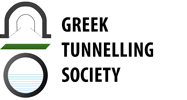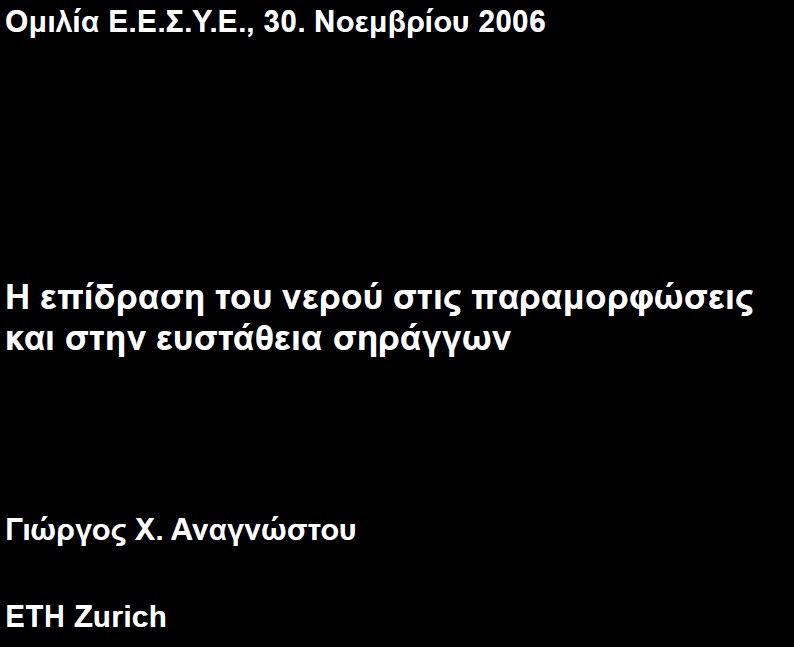The effect of water on deformations and stability of tunnels
Speaker: Prof. G. Anagnostou, ETH
Absract
The interactions between groundwater flow and equilibrium, stress field and pore water pressures around a tunnel are among the most interesting topics in geotechnical engineering. Water can affect the stability and deformations of underground structures through the development of water pressures that reduce the shear strength of the soil or rock mass, through the development of seepage forces during underground flow, and through internal soil erosion and leaching of fine grains. In low-permeability formations, the movement of water through pores also leads to time-varying deformations. The talk will develop these topics based on a series of examples covering a wide range of construction methods, geotechnical conditions and problems: face stability and settlements during the excavation of shallow tunnels, excavation in fracture zones with mylonites under high water pressure, deep tunnels with crushing conditions and tunnels in swelling rocks. Emphasis will be given to practical questions of tunneling, to the understanding of the mechanisms underlying the observed stability and deformation phenomena and to some inherent uncertainties in the design of underground projects. The electronic file of the presentation was provided by Mr. Anagnostou for those interested. It is approximately 6MB in size due to the rich photographic material.
Biographical note
 Georgos Anagnostou was born in 1959 in Athens. He studied Civil Engineering at the University of Karlsruhe, graduating in 1983. From 1983 to 1993 he was a member of the Rock Mechanics and Underground Works Group of the Federal Institute of Technology of Zurich (ETH). He received his PhD in 1991, and his thesis was awarded the ETH medal. He then worked as a consulting engineer in Switzerland while also being an external lecturer at ETH. In 1998 he became a partner at OMETE in Athens, where he was responsible for tunnel studies. In 2003 he was elected full professor at the Chair of Underground Constructions of ETH, a position he still holds today.
Georgos Anagnostou was born in 1959 in Athens. He studied Civil Engineering at the University of Karlsruhe, graduating in 1983. From 1983 to 1993 he was a member of the Rock Mechanics and Underground Works Group of the Federal Institute of Technology of Zurich (ETH). He received his PhD in 1991, and his thesis was awarded the ETH medal. He then worked as a consulting engineer in Switzerland while also being an external lecturer at ETH. In 1998 he became a partner at OMETE in Athens, where he was responsible for tunnel studies. In 2003 he was elected full professor at the Chair of Underground Constructions of ETH, a position he still holds today.
Since 2005 he has been head of the Institute of Geotechnical Engineering. He teaches courses in Rock Mechanics and Underground Works, while his research work focuses on issues of deformations and stability of tunnels in soil or rock materials. He participated as a researcher or expert in numerous underground projects in Greece, Switzerland and elsewhere. He has written 46 scientific and technical articles which were published in international journals or at conferences. He has presented the keynote lecture with a topic similar to today's lecture, at the symposium of the International Association of Rock Mechanics Eurock2006.
Date: 30 November 2006, 18:30.
Venue: Main Hall, National Technical University of Athens, Zografou Campus

